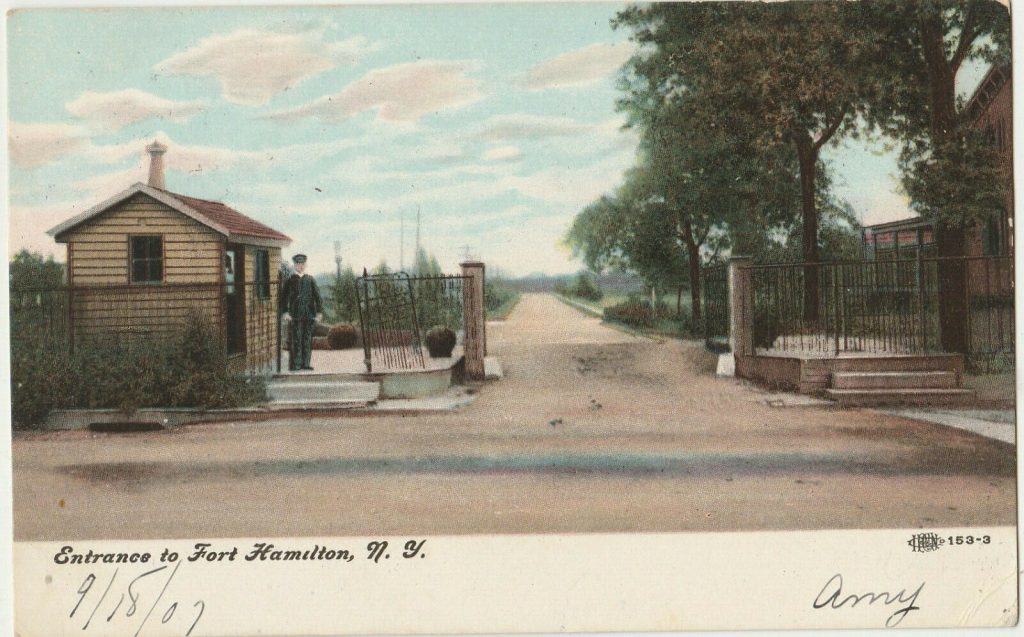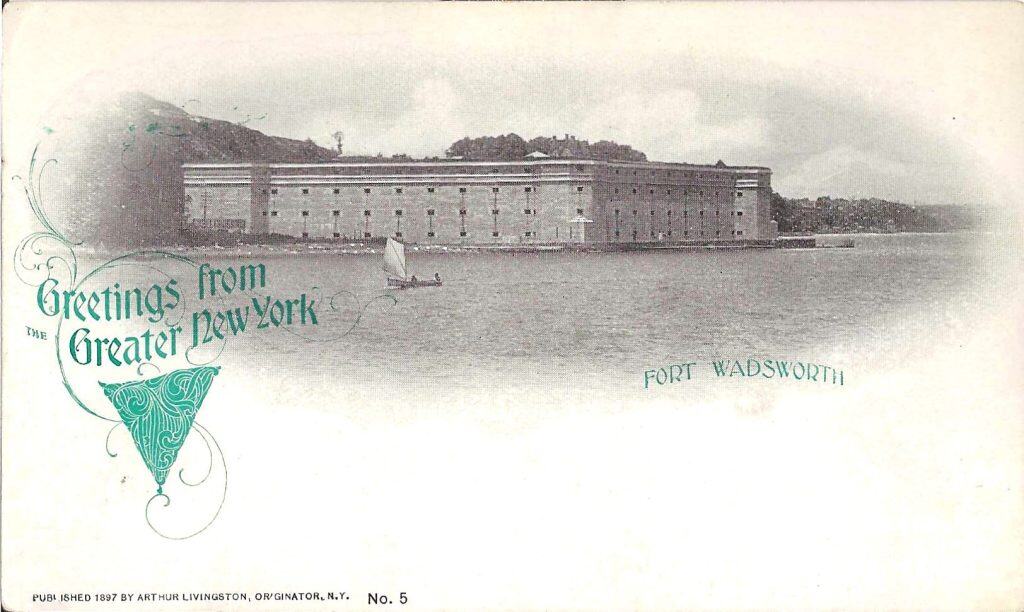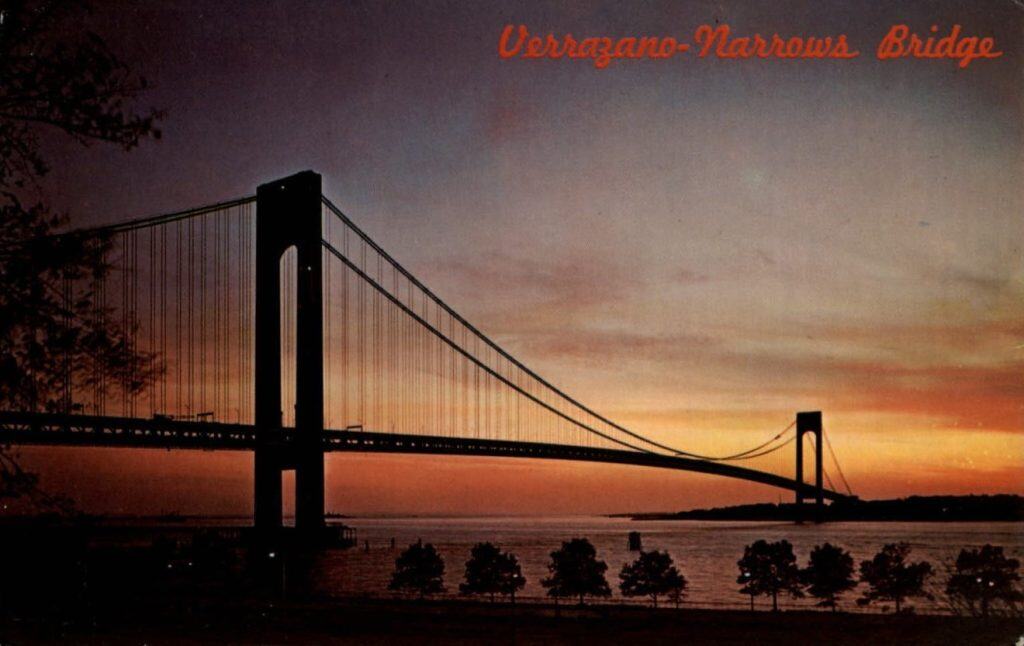Editor’s Staff
The Narrows of New York Bay
Every vessel bound for New York must sail through the Narrows. Geographically, the Narrows is a tidal straight that separates Staten Island and Brooklyn, two of the boroughs of New York City.

The Narrows is the channel through which the Hudson River flows into the Atlantic Ocean and it has always been the waterway into the harbors of New York and New Jersey. If a record was kept of the number of ships passing through the Narrows, whoever was keeping it would certainly have lost count decades ago. Likewise, if social historians had ever done research to determine how many immigrants to the United States have sailed through the Narrows on their way to a life in the new world, they too would need to think in terms of millions.
Years before the colonies became the United States and then into our Revolutionary War era (1776 to 1783), the British recognized the ease with which they entered the area as an occupation force. It was they who first established defenses of the Narrows in 1779. After the war the new American government also realized that the area needed fortification and built defense facilities such as Fort Wadsworth and Fort Hamilton.

Fort Hamilton was the first United States Army base established. Property was acquired in the southwest corner of Brooklyn and Fort Hamilton was the result when on June 11, 1825, Simon Bernard, the French design engineer, set the cornerstone in place. The mission of Fort Hamilton was to protect the area and provide support for the National Guard.
Construction continued and was completed in 1831.

Fort Wadsworth (originally named Fort Richardson) is located on the easternmost tip of Staten Island. In the first decades of the 19th century, New York State planned for earthworks fortifications to help defend the Narrows. The plans were ambitious and included five other fortifications that came to be known as the Second American System of coastal defense.
The War Department received permission from the State of New York in 1841, to occupy Fort Richardson and was in full control of the area by 1847. In 1865 the fort was renamed Fort Wadsworth to honor Brevet Major General James Wadsworth, who was killed in 1864 during the Civil War in the battle of the Wilderness in Virginia.
Fort Wadsworth received some serious updates and was expanded during the Spanish American War. During World War One the guns at Fort Wadsworth were manned around the clock and identical assignments were given to soldiers assigned to Fort Hamilton. During World War II, operational control of the Fort was returned to the Coast Artillery whose main defenses were anti-aircraft guns.
Other uses of the facility were the national site for the U. S. Army Chaplin School, and after the Army left in 1979, the U.S. Navy made it the headquarters of Naval Station New York. In 1994 the U.S. Navy turned Fort Wadsworth over to the National Park Service.
***

In mid-August 1959, construction began on the only fixed crossing of the Narrows: the Verrazzano-Narrows Bridge. It opened to traffic on November 21, 1964. On that day it was the longest suspension bridge in the world (V-NB surpassed the Golden Gate Bridge, completed in 1937, by 49 feet). Today the bridge is more famous than the forts which once protected the Narrows, but it held the record as longest bridge for seventeen years. In 1981 the Humber Bridge in the United Kingdom was completed and surpassed the Verrazzano-Narrows Bridge by 348 feet. V-NB is now 18th on the longest bridges in the world list.
Every vessel bound for New York must sail under the bridge. There is little concern about sailing under the bridge, on any given day the average clearance from the water level to the roadbed is 240 feet.
I first saw the Verrazano-Narrows Bridge about two years after its opening when my family took a trip to visit my mother’s parents in Manhattan. I was not quite seven at the time.
Thanks for the informative article. I know that my grandparents saw a lot of this this as they entered the country from Armenia and hope to have the experience myself .some day soon.
In 1971 I was stationed at Ft. Hamilton for my US Army AIT Training as a Chaplain’s Assistant. The fort was home to the US Army Chaplain’s School. I couldn’t have had a better duty station. Ft. Wadsworth also hosted us for special classes. And we would tell our home folks that we lived under a bridge, called the V-Narrows Bridge. (lol) We watched the Twin Towers under construction and marveled at their heights. Every day after our training was complete we walked a few blocks to the subway station and headed to downtown Manhattan’s USO Club for free tickets… Read more »